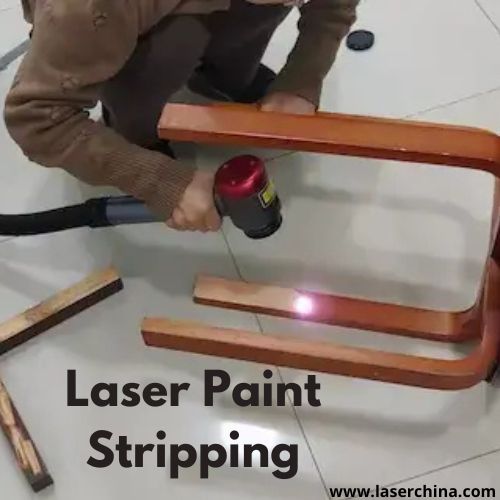
Laser paint stripping is a cutting-edge technique that has rapidly gained attention across multiple industries due to its precision and cleanliness. Instead of relying on traditional abrasive or chemical methods, this process uses concentrated laser energy to remove paint, coatings, and contaminants from surfaces. It is highly controlled, leaving the underlying material intact while delivering smooth, residue-free results.
The process of laser paint stripping has evolved as industries continue to shift towards sustainable and efficient cleaning technologies. Whether applied in aerospace, automotive, or manufacturing, its purpose remains the same—to achieve consistent paint removal without damaging the substrate. The growing preference for laser-based cleaning methods highlights the need for precision and environmental responsibility in industrial maintenance and production lines.
How Laser Paint Stripping Works
The process begins when a laser beam is directed onto a coated surface. The beam’s energy is absorbed by the paint layer, causing rapid heating and vaporization or detachment from the substrate. The paint either turns into fine dust or flakes off depending on the coating type and surface condition.
Unlike abrasive blasting, which relies on physical impact, laser paint stripping is a non-contact process. This distinction eliminates surface deformation or erosion, ensuring that the material retains its original structure and dimensions. The laser parameters—such as wavelength, pulse duration, and power—are adjusted based on the coating’s composition and the base material.
As the laser moves over the surface, it removes layer after layer of paint with unmatched precision. A fume extraction system simultaneously collects particles and residues, maintaining a clean working environment and minimizing contamination. The result is a uniform, clean surface ready for repainting, bonding, or inspection.
Applications of Laser Paint Stripping
Laser paint stripping is now widely adopted in fields that demand accuracy and high-quality surface treatment.
-
Aerospace Industry:
Aircraft maintenance requires careful removal of paint from aluminum, titanium, or composite surfaces without compromising structural integrity. Laser paint stripping ensures that only the coating is removed, maintaining the aircraft’s aerodynamic and safety standards. -
Automotive Manufacturing:
Car components, especially metallic or composite panels, are often repainted during production or refurbishment. Using laser paint stripping allows manufacturers to remove coatings precisely without scratching or warping the material. -
Marine and Shipbuilding:
Ships and submarines face continuous exposure to harsh environments that degrade their paint layers. Laser stripping provides an effective way to clean hulls and other components while preventing corrosion and metal fatigue. -
Defense and Military:
Military vehicles, aircraft, and equipment undergo frequent repainting. Laser paint stripping helps maintain their performance by providing thorough paint removal without structural alteration or material weakening. -
Industrial Equipment Refurbishment:
Machinery and tools used in factories often need repainting or coating adjustments. Laser paint stripping allows operators to clean surfaces efficiently and restore them to operational condition quickly.
Process Control and Equipment Setup
Implementing laser paint stripping involves understanding both the technology and the specific requirements of each task. The setup includes the laser source, beam delivery system, focusing optics, and motion control. Modern systems come equipped with automated scanners and robotics to handle large or complex parts.
The operator configures the laser’s pulse duration and power density to match the coating type. For example, thick epoxy paints require higher energy density compared to thin powder coatings. Proper calibration ensures complete paint removal without surface overheating.
Temperature monitoring and real-time feedback systems enhance process consistency. These integrated controls allow for precise layer-by-layer removal, especially when dealing with multi-layer coatings. The goal is to ensure even stripping without leaving residues or burn marks.
Surface Preparation and Quality Results
Before initiating laser paint stripping, the surface is examined to determine coating thickness and adhesion strength. This assessment helps define the required laser parameters. Once the process begins, the beam systematically scans across the area, ensuring that no region is overexposed.
After stripping, surfaces are left smooth and free of debris. The absence of mechanical abrasion means there are no scratches, dents, or embedded particles—qualities that are critical for applications like aircraft skin panels or precision-engineered components.
This method also ensures consistent surface energy, which enhances adhesion during repainting or coating reapplication. Industries that prioritize repeatable results often rely on laser paint stripping because it maintains exact tolerances and cleanliness standards.
Environmental and Safety Considerations
Laser paint stripping aligns with the modern push toward eco-friendly industrial practices. It eliminates the need for solvents, acids, or other hazardous chemicals commonly used in conventional stripping. This not only protects workers but also reduces waste disposal costs and environmental impact.
The process also minimizes airborne dust since most systems include integrated filtration units. These filters capture particles and fumes, ensuring that the workspace remains clean and compliant with health regulations. The absence of consumable materials such as abrasives or chemicals further reduces operational waste and logistics complexity.
Moreover, because the process is contactless, it lowers the risk of operator injury from physical handling or chemical exposure. Workers can monitor the operation from a safe distance through automated control systems or robotic interfaces.
Economic and Operational Impact
Adopting laser paint stripping technology contributes to long-term operational efficiency. The precision and automation reduce downtime and rework, while the minimal need for consumables lowers recurring costs. Over time, companies experience consistent quality output and improved turnaround rates.
Laser systems are also flexible—they can handle different coating types and substrates without changing equipment. This versatility makes them suitable for maintenance workshops, production lines, and refurbishment centers.
Because the process is programmable, it integrates seamlessly into automated production environments. This compatibility with robotic arms or CNC motion systems supports continuous operations, reducing labor dependency and enhancing productivity.
Maintenance of Laser Paint Stripping Systems
Proper maintenance ensures consistent performance and longevity of the equipment. Regular inspection of optics, lenses, and filters prevents contamination that could affect beam quality. Cooling systems should also be checked to maintain stable laser output.
Software updates and calibration routines help maintain precision, especially when switching between different coating types or materials. Scheduled cleaning of dust collectors and exhaust systems ensures environmental compliance and extends component life.
Operators should be trained to identify early signs of misalignment, reduced beam intensity, or optical wear. Preventive maintenance avoids unexpected downtime and keeps the system running efficiently throughout its service life.
Technological Developments in Laser Paint Stripping
The field continues to evolve, with innovations focusing on greater speed, precision, and automation. Fiber lasers with adjustable pulse durations allow operators to fine-tune performance for specific coatings.
Recent systems include AI-assisted scanning for adaptive control, ensuring that every layer is removed uniformly even on curved or uneven surfaces. Portable laser paint stripping units are now used for on-site maintenance, making the technology accessible for field applications in aerospace or shipbuilding environments.
In industrial production, robotic laser stripping cells are being adopted for large-scale, repetitive tasks. These systems operate continuously and deliver consistent surface results without manual intervention.
Final Thoughts
Laser paint stripping has transformed how industries approach surface cleaning and coating removal. It delivers unmatched precision, safety, and environmental compliance—all while maintaining the integrity of the substrate. The method’s flexibility across diverse materials and coatings makes it a dependable solution for manufacturers and maintenance teams aiming for efficiency and sustainability.
As industries continue to demand cleaner, safer, and faster methods, laser paint stripping stands out as a forward-looking approach that supports both production goals and ecological responsibility. It marks a major step toward a more refined, high-performance future in industrial surface treatment.


